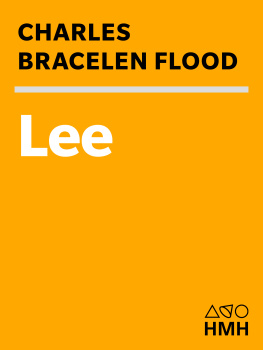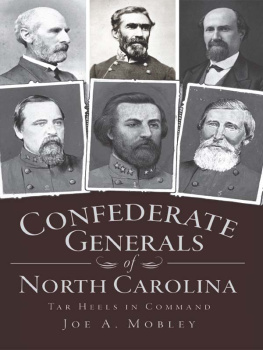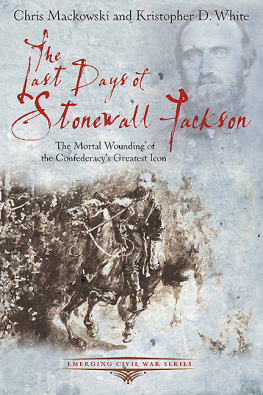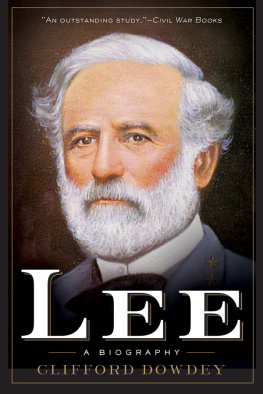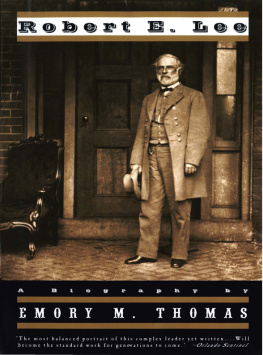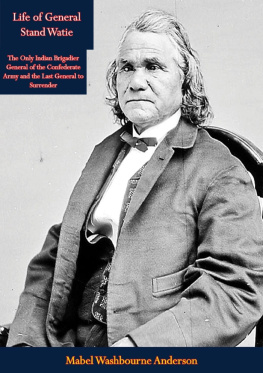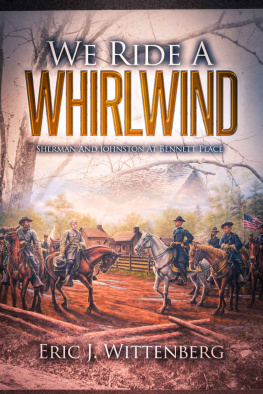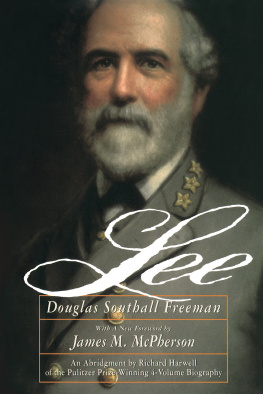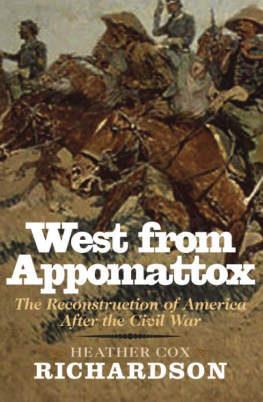First Mariner Books edition 1998
Copyright 1981 by Charles Bracelen Flood
ALL RIGHTS RESERVED
For information about permission to reproduce selections from this book, write to or to Permissions, Houghton Mifflin Harcourt Publishing Company, 3 Park Avenue, 19th Floor, New York, New York 10016.
www.hmhco.com
The Library of Congress has cataloged the print edition as follows:
Flood, Charles Bracelen.
LeeThe Last Years.
Bibliography: p.
Includes index.
1. Lee, Robert E. (Robert Edward), 18071870. 2. GeneralsConfederate States of AmericaBiography. 3. Confederate States of America, ArmyBiography. I. Title.
E 467.1.14 F 56 973.8'1'0924 [ B ] 81-4231
ISBN 0-395-92974-1 (pbk.) AACR 2
eISBN 978-0-547-52594-5
v2.0717
In dedicating this book, I think first of my mother, the late Ellen Bracelen Flood, who shared with her children her love for the English language. I wish also to express my admiration for L. Randolph Mason, a Virginian whose conversations led this Northerner to realize that this was a story that belonged not only to the South but to our nation as a whole.
Acknowledgments
I WISH TO THANK General Lees granddaughter, Mrs. Hunter deButts of Upperville, Virginia, for permission to consult and quote from the deButts-Ely Collection of Robert E. Lee Family Papers in the Library of Congress, and for allowing me to use her photographs of the Lee children in this book. I am similarly indebted to Mrs. Charles K. Lennig, Jr., of Philadelphia, for permission to quote from her collection of twenty letters from General Lee to her grandmother Annette Carter, none of which have been previously published.
Of the many people who assisted me in my research, I am particularly grateful to Betty Ruth Kondayan, Reference and Public Services Librarian at Washington and Lee University, who at this writing has just been appointed Librarian of the Julia Rogers Library at Goucher College. For more than three years, Mrs. Kondayan was of invaluable help, both during my trips to Lexington, Virginia, to consult the Lee Papers at Washington and Lee University, and in her swift, friendly, and efficient responses to what must have seemed endless further questions by mail and telephone. Her efforts were ably complemented by those of Susan Coblentz Lane. I am also very much indebted to Professor Holt Merchant of the Department of History at Washington and Lee, who gave the manuscript of this book two readings at different stages and made many exceedingly valuable suggestions. Whatever its remaining faults, the book profited greatly by his efforts.
Professor Grard Maurice Doyon, Chairman of the Art Department and Director of the duPont Gallery at Washington and Lee, shared with me his information and translations concerning the Swiss painter Frank Buchser, whose trip to Lexington to paint the last portrait from life of General Lee was apparently unknown to previous biographers. Mrs. Mary P. Coulling of Lexington, who is writing a book about the Lee daughters, gave my manuscript a most helpful reading, and is in my judgment the first person to clarify the confusion surrounding the chaotic weather conditions at the time of General Lees death. Also at Washington and Lee University, I received the assistance of Maurice D. Leach, Jr., Librarian of the University Library; Robert S. Keefe, Director of the News Office; Romulus T. Weatherman, Director of Publications, and Captain Robert C. Peniston, USN (Ret.), Director of the Lee Chapel. Patrick Brennan of the Class of 1978 acted as a most enthusiastic, knowledgeable, and helpful guide while I was in Lexington. I also made use of the Preston Library at the Virginia Military Institute in Lexington.
At the Library of Congress, Ms. Marianne Roos was extremely helpful during my days spent consulting the deButts-Ely Collection. Other institutions that have assisted me are: the National Archives; Virginia Historical Society; the duPont Library at Stratford Hall Plantation; the New-York Historical Society, and the State Historical Society of Missouri. Inquiries were helpfully answered by the Duke University Library and by Gettysburg College. Among the individuals who wrote prompt and useful answers to questions are Charles E. Thomas of Greenville, South Carolina, and Dr. Arthur Ben Chitty of the Association of Episcopal Colleges. Frederick C. Maisell III, Historian of the McDonogh School in McDonogh, Maryland, made available to the author the last letter written by General Lee. Dr. Robert S. Conte, Greenbrier Historian, answered questions concerning the White Sulphur Springs resort in West Virginia now known as the Greenbrier, where General Lee and his family spent time during his last summers.
On my research trip to Appomattox Court House National Historical Park, I received excellent cooperation from Ronald G. Wilson, Park Historian, who later answered further inquiries. In Richmond, Virginia, Mr. and Mrs. Lawrence M. Barnes, Jr., were indefatigable in finding the answers to a variety of questions concerning General Lees days there after the surrender at Appomattox. In Charlotte, North Carolina, Miss Elizabeth Lawrence made numerous exceedingly helpful suggestions after reading the manuscript, as did Mrs. Benjamin Withers. The Honorable Francis O. Clarkson of Charlotte answered legal questions concerning the status of Arlington, and directed my attention to information about the grave of General Lees daughter Anne Carter Lee. James B. Craighill of Charlotte was generous in making available the unpublished reminiscences of his grandfather James B. Craighill. Jules Larsen, formerly of Louisville, Kentucky, and now of Charlotte, was the first to direct my attention to this period of American history in a conversation in 1976. Warren W. Way of Charlotte verified certain North Carolina references.
A special sort of gratitude is due to my agent, Sterling Lord, whose excellent representation has enabled me to pursue my writing on a full-time basis. I am also deeply appreciative of the sensitive and effective contribution made at different stages in the writing of this book by my editor, Austin Olney, Editor-in-Chief of the Trade Division of Houghton Mifflin. He has brought to the task a dedication and a willingness to spend time on a manuscript that can no longer be taken for granted in contemporary publishing.
I am indebted to my sister, Mary Ellen Reese, herself an author, for an insightful reading of my manuscript at an early stage in its development, and to another author, Thomas Parrish, for constructive comments at a later stage. Among the libraries located near my home in Richmond, Kentucky, I made great use of books possessed by the John Grant Crabbe Library at Eastern Kentucky University, and am indebted to its staff and to Dean Ernest E. Weyhrauch, its Director. I am similarly grateful to the Hutchins Library of Berea College, in Berea, Kentucky. Use was also made of the collections in the library system of the University of Kentucky.
In my research on the founding of the Kappa Alpha Order at Washington College while General Lee was the schools president, I was assisted by Professor Idris Rhea Traylor, Jr., of the History Department at Texas Tech University, a Councilor of that national fraternity, and by William E. Forester, its Executive Director. I am grateful to my friend Edward S. Chenault for first bringing to my attention the early history of Kappa Alpha.
Among my friends and neighbors in Richmond, Kentucky, three have volunteered special and most useful assistance. James T. Coy III, M.D., gave me valuable research materials in his possession. William H. Mitchell, M.D., read my manuscript and compared it with earlier descriptions and analyses of General Lees physical condition during the last years of his life, reviewing all of it in terms of present medical knowledge. Jane H. Clouse supervised the preparation of the manuscript.
Next page
